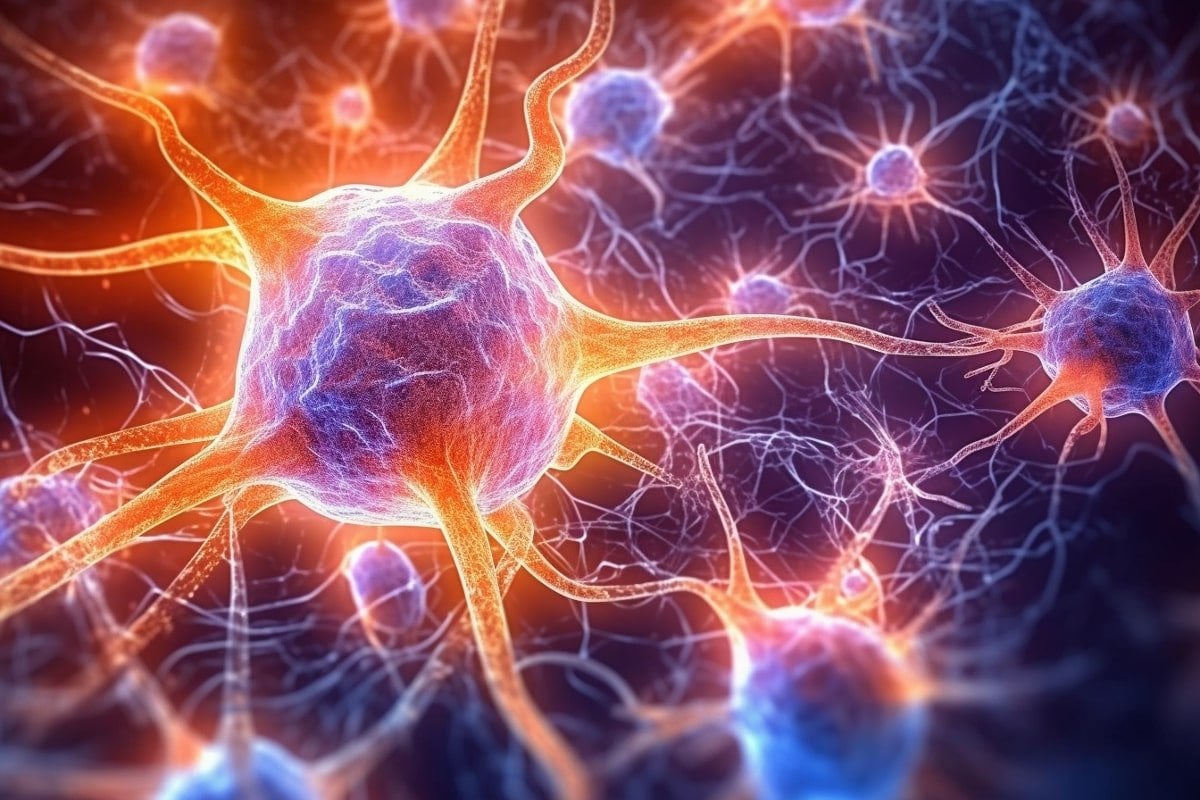Summary: Researchers discovered viruses, including COVID-19, can induce the fusion of brain cells, resulting in malfunctions that contribute to chronic neurological symptoms. The study sheds light on how viruses alter the function of the nervous system. The findings provide a potential explanation for persistent neurological effects experienced by individuals after a viral infection, such as those seen in “long COVID” cases.
Key Facts:
- SARS-CoV-2 infection leads to the fusion of neurons, a previously unseen phenomenon, affecting their firing patterns and overall function.
- The research suggests that cell fusion caused by viruses, including HIV, rabies, measles, and Zika virus, could be a major contributor to neurological diseases and clinical symptoms.
- The study reveals a new mechanism by which viral infections impact the nervous system, highlighting the need for further exploration and understanding of neurological events during viral infections.
Source: University of Queensland
Researchers at The University of Queensland have discovered viruses such as SARS-CoV-2 can cause brain cells to fuse, initiating malfunctions that lead to chronic neurological symptoms.
Professor Massimo Hilliard and Dr. Ramon Martinez-Marmol from the Queensland Brain Institute have explored how viruses alter the function of the nervous system. Their research is published in Science Advances.
SARS-CoV-2, the virus that causes COVID-19, has been detected in the brains of people with “long COVID” months after their initial infection.

“We discovered COVID-19 causes neurons to undergo a cell fusion process, which has not been seen before,” Professor Hilliard said. “After neuronal infection with SARS-CoV-2, the spike S protein becomes present in neurons, and once neurons fuse, they don’t die. They either start firing synchronously, or they stop functioning altogether.”
As an analogy, Professor Hilliard likened the role of neurons to that of wires connecting switches to the lights in a kitchen and a bathroom.
“Once fusion takes place, each switch either turns on both the kitchen and bathroom lights at the same time, or neither of them,” he said. “It’s bad news for the two independent circuits.”
The discovery offers a potential explanation for persistent neurological effects after a viral infection.
“In the current understanding of what happens when a virus enters the brain, there are two outcomes—either cell death or inflammation,” Dr. Martinez-Marmol said. “But we’ve shown a third possible outcome, which is neuronal fusion.”
Dr. Martinez-Marmol said numerous viruses cause cell fusion in other tissues, but also infect the nervous system and could be causing the same problem there.
“These viruses include HIV, rabies, Japanese encephalitis, measles, herpes simplex virus and Zika virus,” he said. “Our research reveals a new mechanism for the neurological events that happen during a viral infection. This is potentially a major cause of neurological diseases and clinical symptoms that is still unexplored.”
The researchers acknowledge the collaborative efforts of Professor Lars Ittner and Associate Professor Yazi Ke from Macquarie University, Associate Professor Giuseppe Balistreri from University of Helsinki and Associate Professor Kirsty Short and Professor Frederic Meunier from The University of Queensland.
About this COVID-19 and neurology research news
Author: Massimo Hilliard
Source: University of Queensland
Contact: Massimo Hilliard – University of Queensland
Image: The image is credited to Neuroscience News
Original Research: Open access.
“SARS-CoV-2 infection and viral fusogens cause neuronal and glial fusion that compromises neuronal activity” by Ramón Martínez-Mármol et al. Science Advances
Abstract
SARS-CoV-2 infection and viral fusogens cause neuronal and glial fusion that compromises neuronal activity
Numerous viruses use specialized surface molecules called fusogens to enter host cells. Many of these viruses, including the severe acute respiratory syndrome coronavirus 2 (SARS-CoV-2), can infect the brain and are associated with severe neurological symptoms through poorly understood mechanisms.
We show that SARS-CoV-2 infection induces fusion between neurons and between neurons and glia in mouse and human brain organoids.
We reveal that this is caused by the viral fusogen, as it is fully mimicked by the expression of the SARS-CoV-2 spike (S) protein or the unrelated fusogen p15 from the baboon orthoreovirus.
We demonstrate that neuronal fusion is a progressive event, leads to the formation of multicellular syncytia, and causes the spread of large molecules and organelles. Last, using Ca2+ imaging, we show that fusion severely compromises neuronal activity.
These results provide mechanistic insights into how SARS-CoV-2 and other viruses affect the nervous system, alter its function, and cause neuropathology.







